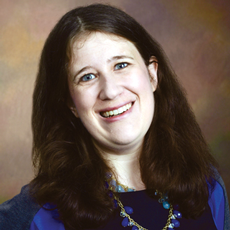
When many of you started dating the Patient-Driven Payment Model, it seemed like the start of any new relationship.
There was mystery and excitement. Some of your friends said, “Good for you,” and others expressed their skepticism that it would work out. Some of you also heard a voice in the back of your head that said, “I’ve been down this road before. What if I get hurt?”
Personally, I had my doubts. I thought it would be like many new romances, where one day there’s a lot of interest and the next day it’s basically “PDPM? I don’t know her.”
I should have realized long-term care providers don’t give up on anything easily. If reader interest is any indication, the PDPM relationship is still hot and heavy. But I’m concerned about what is going to happen when the relationship moves from seeing each other regularly, where both parties are learning about each other, to the marriage.
That’s because President of the California Association of Long Term Care Medicine Michael Wasserman, M.D., made a great point to me in a conversation last week. He noted the real litmus test is not October 1, but next spring. That’s because many providers have zeroed in on learning ICD-10, which will help initially as the documentation process changes.
“The folks who are doing a good job on that will feel comfortable in October and November,” he said. “The folks who weren’t prepared will start hurting in December.”
However, that first group may be headed for a shock. They’ve all read up on ICD-10 and worked on their documentation. Everyone has a good attitude and is ready to put in the work that makes everyone feel safe and cared for in the relationship. But the day-to-day reality of living together may start to show cracks.
The providers doing well in the fall “will have a false sense of security,” Wasserman said. “I believe in February, March and April, the realization will set in that everyone’s been great at documenting diagnoses but no one has figured out how to take care of these folks. They’ll get sicker people because they are paid more, and then providers will start to hurt because the cost of caring will hit the P&L [Profit and Loss].”
As McKnight’s Long-Term Care News Editor James M. Berklan wrote about this week, MDS coordinators are going to be under scrutiny to be part of the interdisciplinary process. But as a geriatrician, Wasserman also is an advocate for physicians to become more collaborative.
“MDS nurses and DONs, as good as they are at what they do, do not have the expertise that geriatricians have in evaluating and caring for this very complicated patient population,” he wrote this spring. “If we’ve learned one thing from the readmission reduction debacle, it’s that just focusing on a number will not improve the delivery of care to frail older adults. You have to know which patient shouldn’t be readmitted! This has actually been our introduction to the wave that is about to hit the industry. The only way to prepare for PDPM is to effectively engage with the experts who understand this highly complex and frail patient population.”
Wasserman told me now is the time for chief medical officers to galvanize their medial directors, especially with regard to resident acuity levels. Capturing and understanding multiple diagnoses is a challenge.
“Having a medical director who ‘gets it’ may be the simplest and easiest way to address these issues,” he said. “Their challenge is educating clinicians who do come to the building and understanding the importance of all the diagnoses. These [residents] have multiple problems.”
Since the Centers for Medicare & Medicaid Services is arranging this marriage, there’s not really an opportunity for you to have second thoughts before PDPM moves into your house. But all the experts advise that success comes down to all the members of the care team talking and working through challenges. Ignoring what’s ahead can lead only to heartbreak.
Follow Senior Editor Elizabeth Newman @TigerELN.



